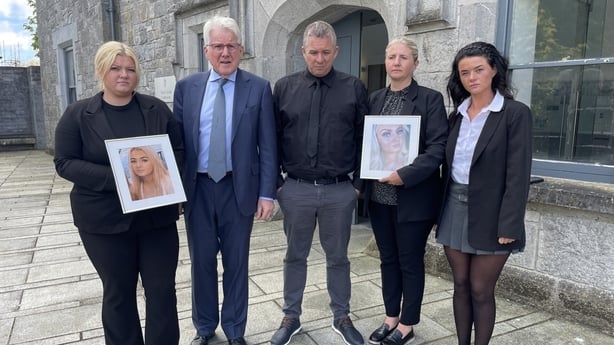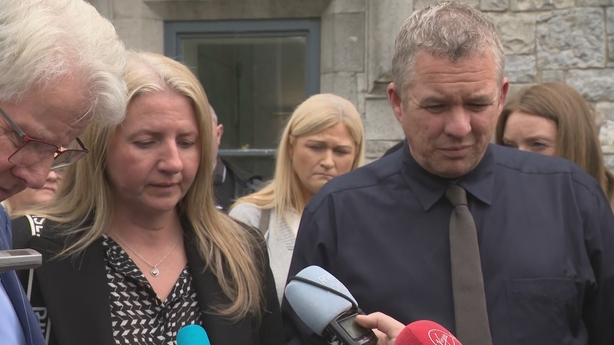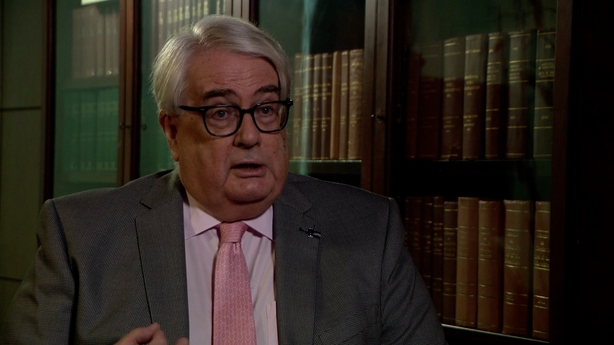At the start of the inquest into the death of Aoife Johnston in Kilmallock, Limerick Coroner John McNamara referred to the "sad and tragic case" that had triggered he inquiry.
Over the following four days, depositions from almost 30 witnesses were heard. Most of them gave further insights into the circumstances that led to the death of a secondary school student from an "eminently treatable" illness.
The parents and siblings of Ms Johnston carried portraits of the 16-year-old into the courthouse last Monday. Mr McNamara invited them to place them on display at the top of the court room, so that all present could remember the reasons why they had gathered there.
One of her siblings told the coroner "we want everyone to see Aoife".
The two images, reproduced widely over recent months, show a young lady who had her life ahead of her. A teenager, from Shannon in Co Clare, who in the space of just over 48 hours became seriously ill and died on 19 December 2022.

Central to that tragedy, and to the inquest that took place this week, was the treatment she received at University Hospital Limerick. The evidence at the Coroner's Court centered on the final hours of Aoife Johnston.
But the implications of what was heard resonate across the midwest region and touch on the welfare of every man, woman and child in the hinterland serviced by the region’s only 24-hour Emergency Department.
There were descriptions of "war zone" like conditions, crowded waiting areas and trolleys placed in any available space, up to and including in front of toilet doors.
We heard the place was a "death trap" on the weekend of 17 and 18 December 2022 - and the inquest was told that categorisation still applies.
Staff are under such pressure that doctors routinely prescribe medication for patients, without having had a chance to review them. Dr Leandri Card said this happens on "every shift, every day".
"Intolerable", "overwhelming" and "horrendous" were just three of the terms used by nurses to describe their experiences of working in the ED.
Dr Card and Clinical Nurse Manager Katherine Skelly were both so impacted by events on the weekend Aoife Johnston died, that they left their jobs in the hospital and are now working elsewhere.
Nurse Skelly encapsulated the sadness she felt, saying "it absolutely broke me professionally and personally that that poor girl died".
In statement after statement at this week’s proceedings, there was nothing to suggest this is a fully functioning, first world, 21st Century healthcare facility.
But none of this is new information.

In June 2022, exactly six months to the day before Aoife Johnston walked through the doors of the ED at University Hospital Limerick, a 40-page report laid out in stark terms what people being treated there were experiencing.
The Health Information and Quality Authority (HIQA) described a place that was "grossly overcrowded", with "prolonged wait times", "insufficient staffing levels" and "a mismatch of demand and capacity".
All this meant there was "little to no privacy or dignity for patients" and compromised the care they could expect to receive. At the time, HIQA said efforts by hospital management to address those issues were both "inadequate" and "ineffective".
By the conclusion of the proceedings in Kilmallock this week, it was hard to see how anything had changed in the two years since the HIQA inspection.

There have been concerns in the midwest for years about the impact a reconfiguration of hospitals in the region has had.
Injury assessment units in Ennis and Nenagh serve a function, but they don’t have the ability to offer full emergency cover. Campaigners argue the reopening of back-up EDs is needed, to ease pressure in the system.
In the meantime, a linked combination of capacity, staffing and demand has created an ongoing perfect storm at UHL’s ED.
As the main point of entry for patients in emergency situation, the facility suffers from a lack of beds elsewhere in the hospital. Essentially, when a person is admitted for further care, they’re often left in the ED until a space becomes vacant on a ward.
This applies in many hospitals. But it’s at a different level at UHL, which routinely tops the daily ‘Trolley watch’ data from the Irish Nurses and Midwives Organisation.
From Tuesday to Friday of this week alone, between 31 and 42 people were recorded on trolleys each day in the ED. The absence of beds elsewhere is reflected in the number of additional trolleys placed in hospital wards: an extra 47 on Tuesday last, rising to 64 by yesterday.
Dr James Gray, an emergency medicine consultant who works in UHL, told the inquest that in the region of 300 additional beds were needed to sort the seemingly perpetual bottleneck there.
While plans to add additional bed capacity were a step in the right direction, he gave the impression that more will still be needed, even when existing commitments are delivered.

The wider problems of overcrowding impact on the care provided to those seeking treatment in the ED. This is precisely what happened to Aoife Johnston.
Her GP identified the possibility she had sepsis when he saw her in his clinic and immediately sent her to the ED.
But the number of people arriving through that evening was such that staff were "overwhelmed". The nursing complement was 25% less than was rostered on duty. The ‘resus’ (resuscitation) area was packed with patients. Doctors were trying to deal with almost 200 people at one point.
In all of this chaos, Ms Johnston got "sicker and sicker and sicker", while her family - and others seeing the pain she was in - pleaded for attention.
Ultimately, she had to wait more than 12 hours to be reviewed by a doctor.
Dr Gray said that had Ms Johnston been seen within the recommended timeframe of ten minutes, "she would have had a much better fighting chance". Instead, given the overcrowding and staff shortages, she had no chance.
In his closing submission to the inquest, the solicitor for the Johnston Family, Damien Tansey SC, said there was a "tragic irony" that scripts were being written by doctors without seeing patients, yet Aoife Johnston had to wait over 15 hours before antibiotics were administered to her.
The inquest heard it was highly probable such simple medication provided earlier would have saved her life.
Dr Patrick Stapleton said test results showed the pathogen present in her system was meningococcus, which can be effectively tackled, in most cases, once drugs are administered in a timely fashion.
By the time she got them, the infection had taken hold. It was too late.

The verdict of medical misadventure issued is now formally recorded in relation to the death of Aoife Johnston.
A number of recommendations were made by the coroner to enhance safety protocols and to ensure others with suspected sepsis don’t experience delays in treatment.
Further investigations are still being completed. Retired Chief Justice Frank Clarke has interviewed many of the staff who gave evidence at the inquest this week. His independent investigation into the tragedy is expected to be completed in the coming weeks.
Aoife Johnston’s family hope nobody else will have to go through what they’ve experienced.
The fortitude they displayed over this week was a mark of their love for their daughter and sister. It was also a service to their community and their country. A desire to ensure that their loss would see lessons learned.
Roughly 500,000 people across counties Limerick, Clare and Tipperary depend on this Emergency Department, should they find themselves in need of urgent medical care.
None of them can have been reassured by what emerged over the course of this week. And all, surely share the wish of the Johnston family; that out of such tragedy, comes change.







